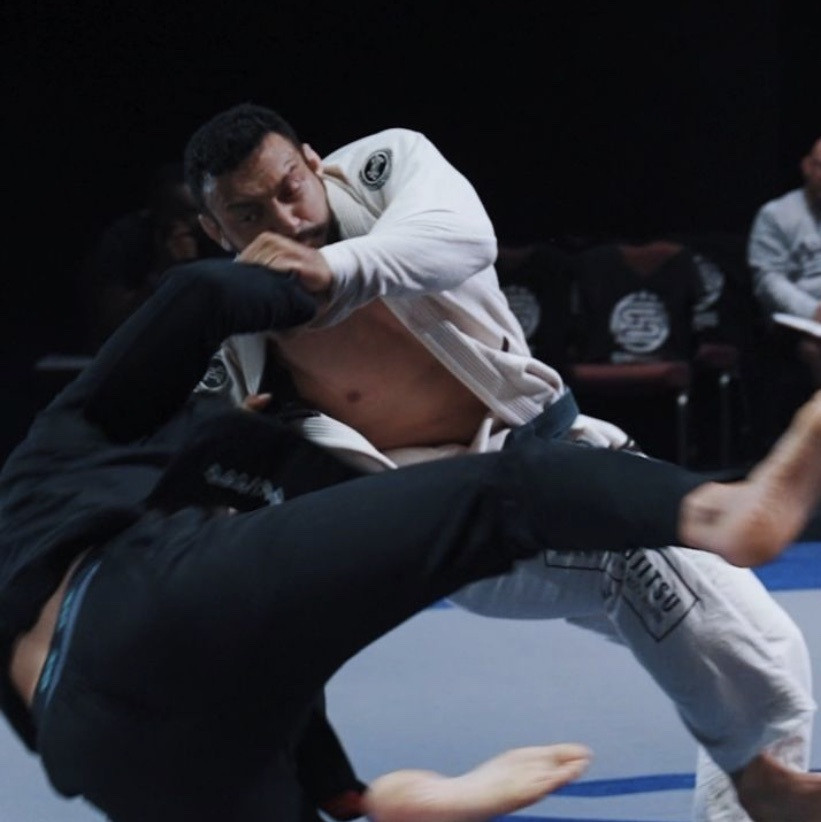MMA techniques: Universal Take-Downs

Takedown moves are crucial in a fight scenario. On the one hand, taking the fight to the ground reduces the amount of damage that strikes can do. It by no mean eliminates the threat of strikes, but a person who is standing can generate a lot more power in a punch or a kick than a person who is on the ground. On the other, ground fighting is where people who have learned jiu-jitsu are their most formidable, especially in a street fight or a mixed martial arts contest. Consequently, having a very effective takedown game is extremely important whether you’re a tournament fighter or someone who is only interested in learning jiu-jitsu for self-defense.
This brings up an interesting question that was explored by Georges St-Pierre, John Danaher, and Lex Fridman on Lex’s podcast in the below video: Are there takedown moves that will work for everyone?
Front v. Back
If it is possible to approach your opponent’s back, this is always going to be a superior position. As John notes, “The human body is setup entirely to defend against threats from the front.” It’s not just the fact that we don’t have eyes in the back of our head. We also can’t punch and kick with the same power or degree of accuracy. Similarly, our arms don’t have pushing strength to repel an opponent on our back.
In most cases, however, you’ll be approaching an opponent from their front, in which case you will have loads of options, the most common of which are the single leg takedown and the double leg takedown.
Universal and Effective
As Georges notes in the clip, moves like the rear naked choke have a high percentage of success for two reasons. The first is that everyone can do it. Your body type or strength level is not important. So long as your arms are long enough to make it around your opponent’s neck, you can execute the move. The second reason is because it’s effective. If you successfully execute the move, it will take out your opponent.
If you’re in front of someone, the single most high-percentage way of taking them down is to get ahold of both of their legs and push them backwards. This is a matter of simple mechanics. You can’t balance if you don’t have control of your legs. As John notes, “I don’t care how athletic your opponent is, if you get a firm grip on both of his legs and start pushing him backwards, he’s going to fall down to his butt.”
Unfortunately, not everyone is going to be able to take both legs. For Georges, a naturally an explosive person and very well-trained fighter, he can move from a single leg takedown to a double very quickly. For a person who does not have the ability to launch an explosive offensive, trying for the double can leave them open to counters. In other words, the double leg takedown has a high percentage of success when well executed, but it may not be universal.
There are other positions that are going to be more effective than others for similar reasons. For example, if you have control of their head in a headlock or chest wrap, then you’ve already closed distance and you don’t have to worry about the types of counters that you encounter when you shoot, like a sprawl or a guillotine.
Calculating Percentages
John notes that when he’s training, he tends to focus on moves with a high percentage of success but says that percentage rates are not constant. Certain moves can have a high percentage of success in one generation but become less effective if someone popularizes a way to defend against it. Conversely, some moves can go from having a low percentage of success to a very high level of success should someone popularize a novel way of doing it.
John uses the example of the leg locks. When he was far younger, a lot of jiu-jitsu fighters thought they had a very low percentage of success. He has found that by changing how one approaches these techniques, they can become high percentage moves. Therefore, when considering how effective any given move is, you should think less about the historical percentages and more about these moves’ raw mechanics.
A Universal Takedown
Is there a universal takedown that will work for everyone? The answer seems to be no. Taking an opponent’s back is going to be more effective than taking the front, but the opportunity to approach from the back is not going to arise very often in most fight scenarios. Similarly, taking both of your opponent’s legs is going to be more effective than taking one leg, but not everyone is going to successfully execute the move.

